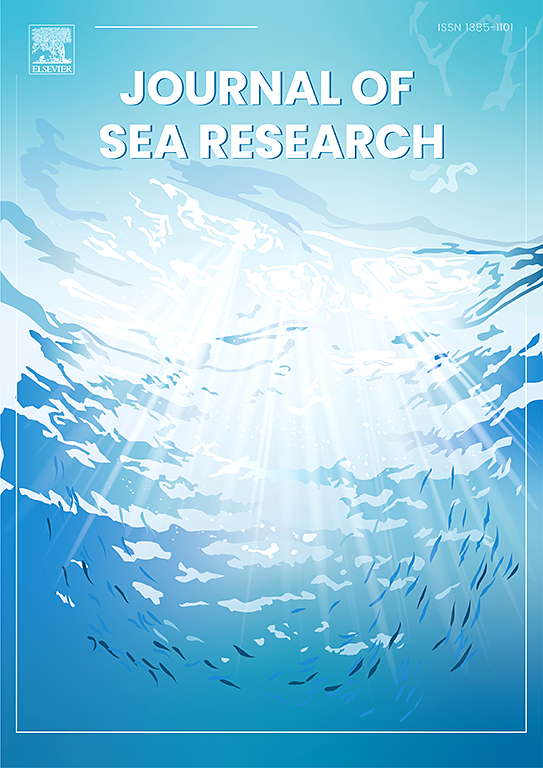孟加拉湾的微塑料:对孟加拉国生物积累和生态影响的重要回顾
IF 2.9
4区 地球科学
Q2 MARINE & FRESHWATER BIOLOGY
引用次数: 0
摘要
微塑料(MPs)由于其广泛存在并在海洋生物群中具有很高的生物积累潜力,对包括孟加拉湾(BoB)在内的海洋生态系统构成了重大威胁。本文旨在全面分析MPs的生物积累、患病率以及这些污染物在BoB中的潜在途径。通过系统地回顾现有文献,我们分析了相关研究并确定了关键发现。在各种海洋生物中检测到MPs,包括鳍鱼,贝类和浮游生物。研究发现,底栖物种比远洋物种摄入更多的多磺酸盐,这可能是由于它们靠近富含多磺酸盐的沉积物。MPs浓度随体重和体长的变化而变化,有的物种呈正相关,有的物种呈负相关。MP颗粒大小从500 μm到1000 μm不等,黑色颗粒、纤维和碎片是最常见的形式。聚乙烯(PE)和聚丙烯(PP)被确定为主要聚合物。西北地区的主要污染源包括渔业、工业和污水排放、旅游业和农业径流。该审查还强调了它们的积累对生态的影响以及通过食用受污染的海产品对人类的潜在健康风险。缺乏关于深海和养殖物种、营养转移和标准方法的信息是一些最重要的缺点。研究人员应该在未来的研究中使用更先进的发现方法,并研究对健康和环境的长期影响。为了减少鲍勃的MP污染,政策制定者应该致力于减少塑料的使用,更好地管理废物,以及行走的可生物降解替代品。本文章由计算机程序翻译,如有差异,请以英文原文为准。
Microplastics in the Bay of Bengal: A critical review of bioaccumulation and ecological impacts across Bangladesh
Microplastics (MPs) exert a substantial threat to marine ecosystems, including the Bay of Bengal (BoB), due to their widespread presence and high potential for bioaccumulation in marine biota. This review aims to provide a comprehensive analysis of the bioaccumulation of MPs, their prevalence, and the potential pathways for these contaminants in the BoB. By systematically reviewing existing literature, we analyzed relevant studies and identified key findings. MPs were detected in various marine organisms, including finfish, shellfish, and plankton in the BoB. Demersal species were found to ingest more MPs than pelagic species, likely due to their proximity to MP-laden sediments. The concentration of MPs varied with body weight and length, with some species showing a positive correlation, while others exhibited a negative correlation. MP particle sizes ranged from <500 μm to 1000 μm, with black particles, fibers, and fragments being the most common forms. Polyethylene (PE) and polypropylene (PP) were identified as the dominant polymers. Major sources of MP pollution in the BoB include fisheries, industrial and sewage discharge, tourism, and agricultural runoff. The review also highlights the ecological implications of their accumulation and the potential health risks to humans through the consumption of contaminated seafood. Lack of information on deep-sea and cultured species, trophic transfer, and standard methods are some of the most important shortcomings. Researchers should use more advanced methods of discovery in future studies and look into the long-term effects on health and the environment. To reduce MP pollution in the BoB, policymakers should work on reducing the use of plastic, making waste management better, and walking biodegradable alternatives.
求助全文
通过发布文献求助,成功后即可免费获取论文全文。
去求助
来源期刊

Journal of Sea Research
地学-海洋学
CiteScore
3.20
自引率
5.00%
发文量
86
审稿时长
6-12 weeks
期刊介绍:
The Journal of Sea Research is an international and multidisciplinary periodical on marine research, with an emphasis on the functioning of marine ecosystems in coastal and shelf seas, including intertidal, estuarine and brackish environments. As several subdisciplines add to this aim, manuscripts are welcome from the fields of marine biology, marine chemistry, marine sedimentology and physical oceanography, provided they add to the understanding of ecosystem processes.
 求助内容:
求助内容: 应助结果提醒方式:
应助结果提醒方式:


